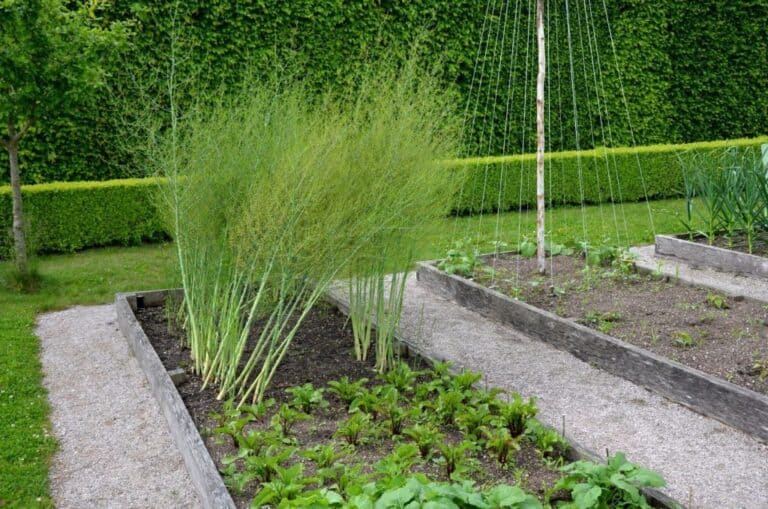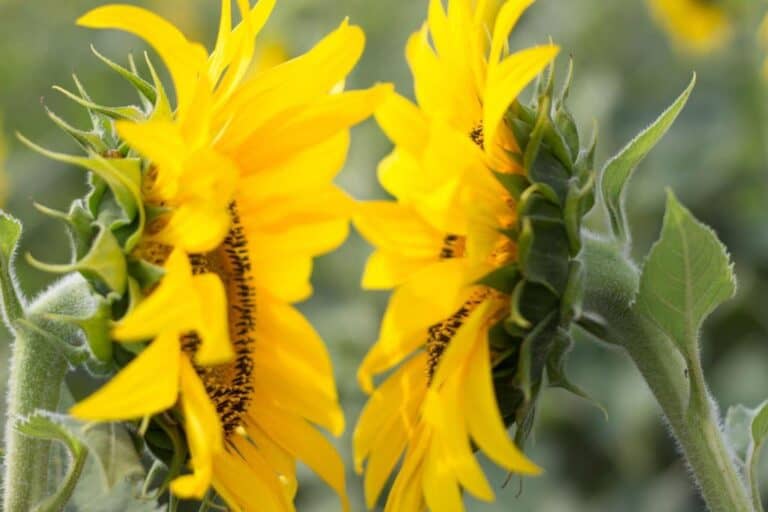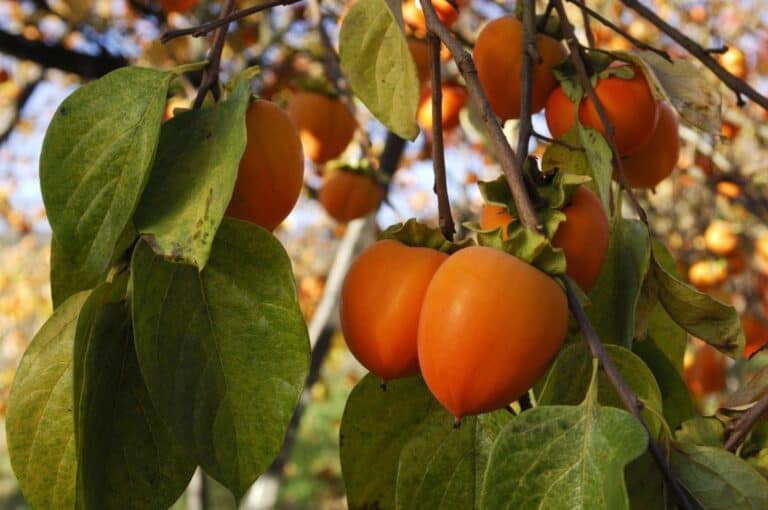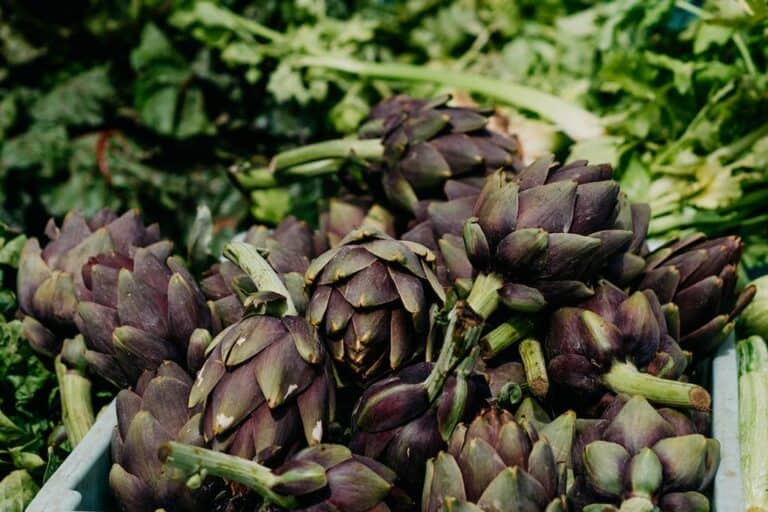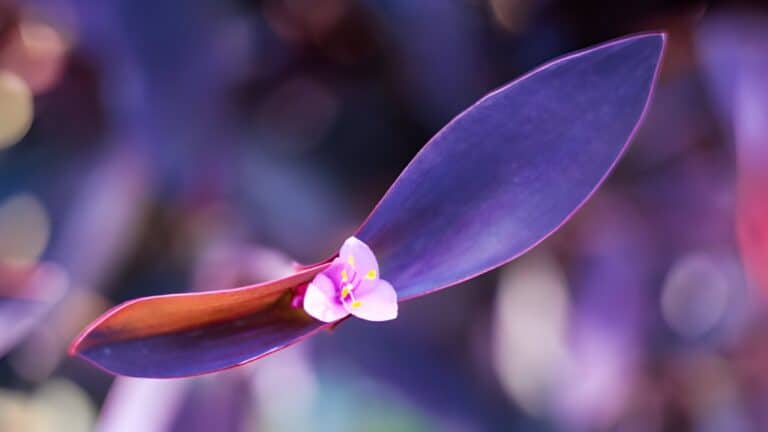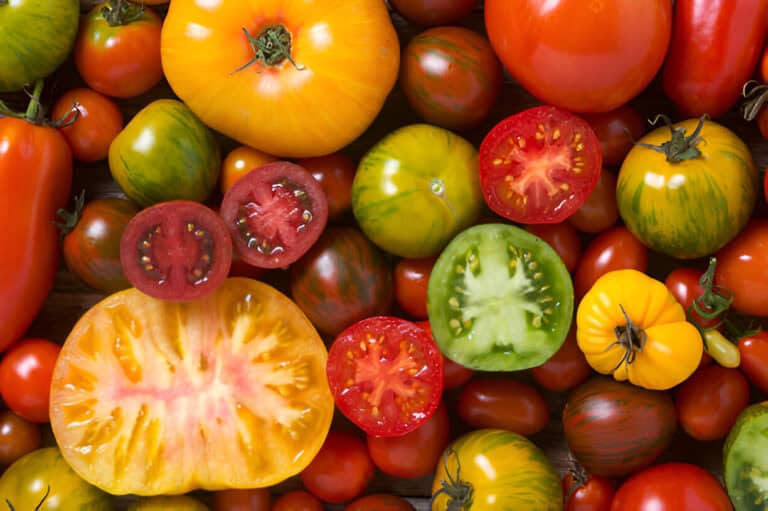Seedless Watermelon Ripe: How to Know It’s Ready to Pick Up?
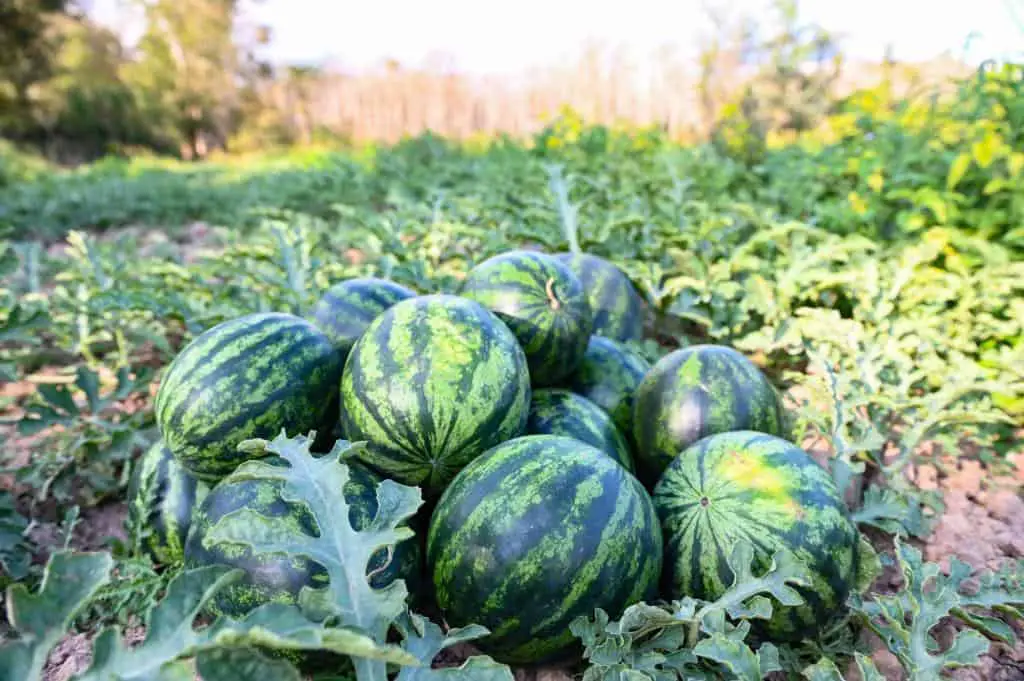
Watermelon, with its juicy, sweet flesh and refreshing flavor, is a quintessential summer treat. Seedless watermelons, in particular, have gained popularity due to their convenience and the absence of those pesky seeds.
However, when it comes to picking the perfect seedless watermelon, it can be a bit tricky. You wouldn’t want to end up with an underripe, tasteless melon, or worse, an overripe mush. So, how do you know if that watermelon is perfectly ripe and ready to indulge in?
In this guide, we’ll delve into the art of picking the ripest, juiciest seedless watermelon, ensuring that your summer picnics and barbecues are as sweet as can be.
The Basics of Seedless Watermelon
Before we get into the nitty-gritty of how to pick a ripe seedless watermelon, let’s understand the basics. Seedless watermelons, as the name suggests, do have seeds, but they are small, edible, and often go unnoticed.
These watermelons are the result of cross-breeding to produce fruit with tiny, soft seeds that are barely noticeable when consumed. They come in various sizes and shapes, but the same principles apply when determining ripeness.
Here’s a simple checklist to keep in mind when checking for ripe watermelon:
- Shape: Seedless watermelons can be round, oval, or even square. Choose one that is symmetrical, as irregularities in shape may indicate inconsistent growth.
- Color: The skin should have a deep, uniform color. For most seedless varieties, this means a vibrant green with darker stripes, but the specific color may vary depending on the type. Avoid watermelons with dull, pale, or shiny skin.
- Texture: Gently run your hands over the surface. It should feel slightly rough, not too soft or too hard.
- Sound: Give the watermelon a light tap. A ripe watermelon should produce a deep, hollow sound, indicating it’s full of water and ready to enjoy.
Now, let’s break down these criteria further.
Checking the Skin
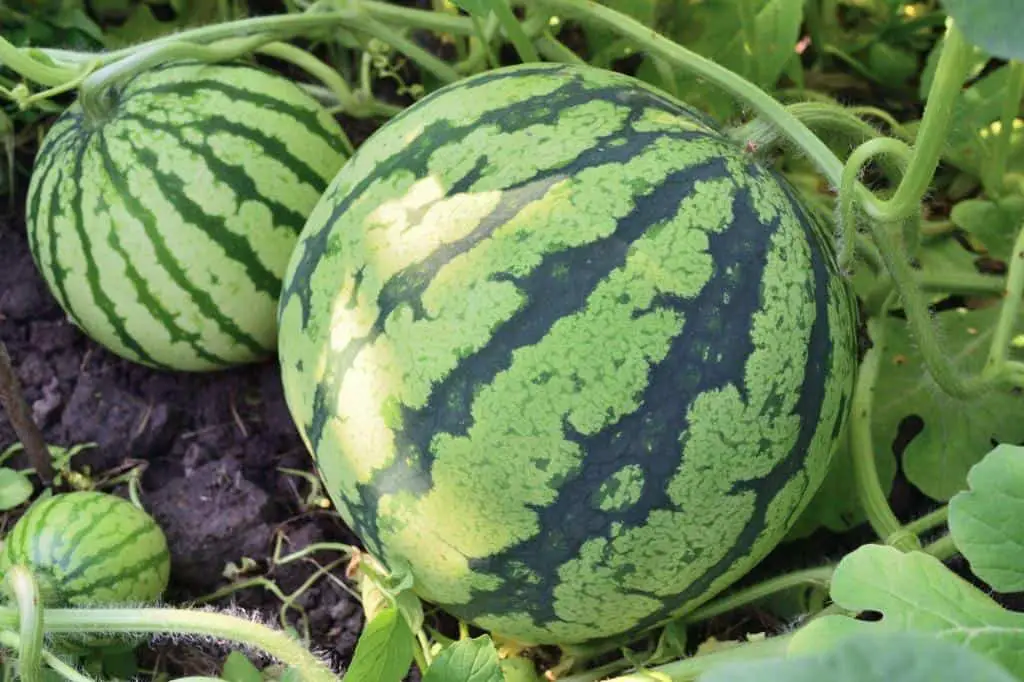
The skin of a seedless watermelon is like its protective armor. To find the perfect watermelon, look for a few key features in the skin:
- Uniformity: A ripe watermelon has a consistent, even color. Whether it’s green with darker stripes or a solid hue, the key is that it should not have any abrupt color changes or splotches.
- Dullness: The skin of a ripe seedless watermelon should have a matte finish rather than a glossy or shiny appearance. This is a sign of maturity.
- Webbing: You may notice a web-like pattern on the skin. This webbing watermelon, often referred to as sugar lines, is a good sign. It indicates that the fruit has had enough time to develop sugars, making it sweeter.
Assessing Texture
The texture of the watermelon’s skin can give you valuable information about its ripeness. Here’s what to look for:
- Slight Roughness: Run your hand over the surface. Ripe watermelons will have a slightly rough texture. If it’s too smooth, it might be underripe, and if it’s too wrinkled, it’s probably overripe.
- Firmness: Gently press your fingers against the skin. A ripe seedless watermelon should yield slightly to the pressure without being too soft.
Listening for the Right Sound
The sound of a tap can reveal a lot about a watermelon’s interior. Follow these steps to listen for the perfect sound:
- Hold the watermelon in your hands, positioning it near your ear.
- Give it a gentle tap with your knuckles. You want to listen for a deep, hollow sound.
- If the sound is high-pitched or dull, it’s a sign that the watermelon might not be ripe. The hollow sound indicates a high water content, which means it’s juicy and ready to eat.
Additional Tips for Picking a Ripe Seedless Watermelon
Now that you have a good grasp of the key criteria for assessing seedless watermelons, here are a few extra tips to ensure you make the best selection:
Check the Field Spot
The field spot, or the part of the watermelon that was resting on the ground as it grew, is another indicator of ripeness. Look for a creamy, yellowish spot. This is a good sign that the watermelon has ripened adequately in the sun. If the field spot is white or green, the fruit may be underripe.
Lift and Weigh
Ripe watermelons should feel heavy for their size. Pick up a few watermelons of similar size and compare their weight. The heaviest one is likely the ripest, as it has absorbed the most water.
Look at the Tail
Examine the tail of the watermelon where the stem used to be. If it’s dried and brown, it’s a good indication of ripeness. If it’s green or still has leaves attached, the watermelon might not be fully mature.
Read: The Production of Seedless Watermelons: Are They Hybrid or Natural?
How Long Does It Take for a Seedless Watermelon to Ripen?
Seedless watermelons’ duration from planting the seed to picking the perfect, sweet melon can vary but typically falls within a specific range.
Seedless watermelons usually require a window of 80 to 95 days to reach their full maturity and ripeness. However, this timeline isn’t set in stone. Several factors can influence the exact number of days it takes for a seedless watermelon to become ready for harvest.
The variety of seedless watermelon you’re growing plays a significant role, with some types maturing faster than others. Environmental conditions such as temperature, sunlight, and rainfall can also impact the ripening process. To add to the mix, planting dates can lead to variations in the time it takes for these juicy fruits to be perfectly ready.
In essence, the 80- to 95-day range is a general guideline. Keep a close eye on your watermelons and use visual cues like skin color, texture, and sound to know when they’re at their sweetest, ripest best.
Optimal Harvest Time for Seedless Watermelons
Seedless watermelons are a summertime delight, but knowing precisely when to harvest them for that perfect, juicy, and sweet experience can be a bit of a horticultural puzzle.
The right timing is crucial to ensuring the fruit is at its peak ripeness, bursting with flavor, and ready to impress your taste buds. In this guide, we’ll explore the optimal harvest time for seedless watermelons, offering insights based on planting dates, the environmental factors that influence timing, and the critical factors that enhance the sweetness and flavor of these luscious fruits.
The harvest window for seedless watermelons largely depends on when they were planted. Here’s a general guideline to help you determine the ideal moment for harvesting:
Early Planting (Late Winter to Early Spring)
- Planting Date: Late winter to early spring
- Optimal Harvest: late spring to early summer
Seedless watermelons planted during this period tend to mature faster due to the warmer weather. Harvesting in late spring or early summer ensures sweeter and juicier melons.
Mid-Season Planting (Late Spring to Early Summer)
- Planting Date: Late spring to early summer
- Optimal Harvest: Mid to late summer.
If you plant your seedless watermelons in late spring or early summer, expect to harvest them in mid to late summer when they reach their peak ripeness, offering an excellent balance of sweetness and texture.
Late Planting (Mid to Late Summer)
- Planting Date: Mid to late summer.
- Optimal Harvest: Late summer to early fall.
Late-season planting will result in a late summer to early fall harvest. While these watermelons may not be as sweet as those from early planting, they are still delicious and refreshing.
How to Ripen a Watermelon After It’s Picked
You have just harvested or brought home an unripe watermelon and are excited to indulge in its sweet, juicy flavor. The good news is that you can encourage further ripening even after the watermelon is off the vine. Here’s how to do it:
1. Room Temperature: The first step is to find a spot at room temperature, ideally around 70–75°F (21–24°C). This temperature range is conducive to ripening. Placing it on the kitchen counter or a shelf is a good idea.
2. Avoid Direct Sunlight: While warmth is beneficial, direct sunlight isn’t. Sunlight can heat the exterior of the watermelon without evenly ripening the inside, potentially making it mushy. Thus, keep your watermelon in a shaded area during this process.
3. Isolate from Ethylene Producers: Ethylene is a natural plant hormone that can accelerate ripening. However, not all fruits release ethylene at the same rate. To avoid overripening, keep your watermelon away from ethylene-producing fruits such as apples, bananas, and avocados.
By following these steps, you can coax your unripe watermelon to reach its peak, ensuring a delectably sweet and juicy experience when you finally slice into it.
Storing Your Seedless Watermelon
Once you’ve picked the perfect, ripe seedless watermelon, it’s important to store it properly to maintain its freshness and flavor. Here are a few storage tips:
- Temperature: Keep your watermelon at room temperature until you’re ready to eat it. Once you cut it, store the remaining pieces in the refrigerator.
- Cutting and Serving: To enjoy your seedless watermelon, wash it thoroughly, cut it into slices or chunks, and serve it chilled. Some people even like a dash of salt or a squeeze of lime to enhance the flavor.
- Leftovers: If you have leftover watermelon, wrap it in plastic or place it in an airtight container before refrigerating. It should remain fresh for a few days.
Related: Is It Safe to Eat Seedless Watermelon with White or Yellow Inside?
Types of Seedless Watermelons
There are several types of seedless watermelons, each with its own unique qualities and flavor profiles. Here’s a quick overview of a few popular varieties:
| Variety | Description | Notable Characteristics |
| Sugar Baby | Small, round watermelon with dark green skin and sweet, red flesh. | Compact size, perfect for single servings. |
| Crimson Sweet | Medium to large watermelon with a bright green rind and juicy, sweet, and crisp red flesh. | Exceptional sweetness and refreshing taste. |
| Mini Love | Compact watermelon with a striped rind and sweet, red flesh. | Ideal for small families or single servings. |
| Jubilee | Large, oval watermelon with a green-striped rind and bright red flesh. | Great for sharing with a group. |
| Yellow Doll | Small to medium-sized watermelon with a pale yellow rind and sweet, pale yellow flesh. | Unique color and slightly milder flavor. |
Each of these varieties has its own distinct characteristics, so you can choose the one that suits your taste preferences the best.
Conclusion
Selecting a perfectly ripe seedless watermelon doesn’t require a degree in horticulture; it’s all about paying attention to the details. Remember the critical factors like shape, size, skin color, the field spot, texture, sound, weight, undeveloped seeds, and sugar spots. And don’t forget to trust your senses—your nose knows.
With the right guidance and a little practice, you’ll become a seedless watermelon connoisseur, delighting in the sweet, juicy goodness of this summer treat with every bite. So, the next time you’re at the market or your local
FAQs on Seedless Watermelon Harvest Readiness
What are the benefits of seedless watermelons?
Seedless watermelons offer convenience, easier consumption, and less seed interference in culinary applications. They also provide similar nutritional benefits to traditional watermelons, including hydration and essential vitamins.
Can you eat a watermelon that’s not ripe?
Unripe watermelons are safe to eat but might lack sweetness and have a bland taste. However, they might cause some stomach discomfort if consumed in large quantities.
Do seedless watermelons taste different from seeded ones?
Seedless watermelons often have a slightly different taste due to the absence of seeds, but the flavor profile is generally similar to that of seeded varieties, primarily influenced by factors such as ripeness and growing conditions.
How do you store a ripe, seedless watermelon?
Store a ripe seedless watermelon in the refrigerator at around 50 degrees Fahrenheit. Keep it in the crisper drawer or in a sealed container to maintain its freshness and prevent it from absorbing odors.
What are the common mistakes people make in determining watermelon ripeness?
Common mistakes in determining watermelon ripeness include solely relying on the color, ignoring the feel and sound when tapped, and misunderstanding the role of the field spot in indicating ripeness.
What are the best conditions for growing seedless watermelons?
Seedless watermelons thrive in warm climates with well-drained soil and plenty of sunlight. They require consistent watering and benefit from temperatures ranging between 70 to 80 degrees Fahrenheit.
How do you know if a seedless watermelon is genetically modified?
To identify if a seedless watermelon is genetically modified, check for a sticker with the PLU code. A five-digit code starting with an “8” signifies that the produce is genetically modified. Non-GMO produce has a four-digit PLU code starting with a “3” or a “9.”

